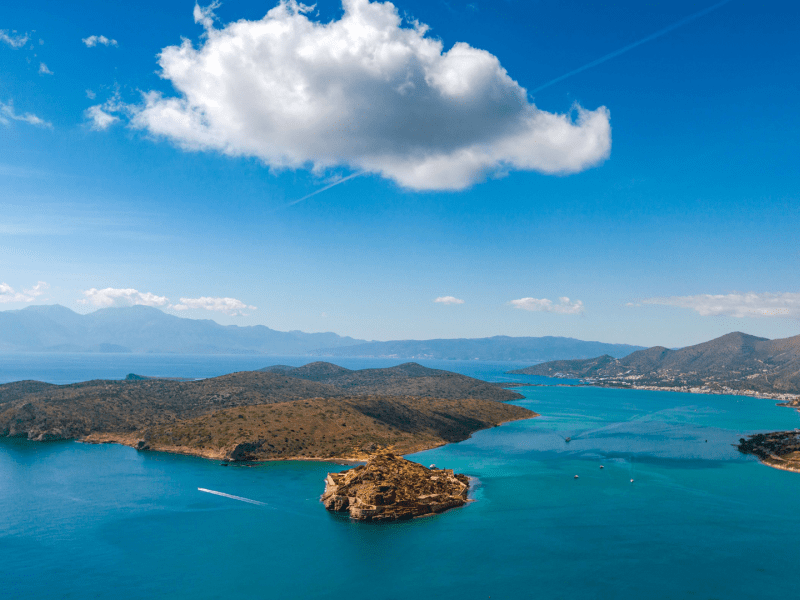What does the UN plastic waste treaty mean for us all?
175 countries have endorsed the United Nations in developing a treaty to restrict plastic pollution—finally, future legislation that considers the entire lifecycle of the material, from design to disposal.

March 2, 2022 marked a huge milestone in the environmental movement, and now the first-ever plastic pollution treaty is official in the making.
Our world leaders are calling it the most significant environmental deal since the Paris Agreement, which was signed over five years ago and stole the spotlight at COP26, just last year.
While the endorsement of the UN plastic waste treaty is both necessary and exciting, we’re surprised it surfaced so long after the Paris Agreement—here’s why.
The Paris Agreement sets lofty goals to slow global warming, limiting greenhouse gas emissions by reducing our reliance on fossil fuels. At COP26, world leaders decided that phasing out coal is one of the most effective and worthwhile ways to do so.
This is where the UN plastic waste treaty comes into play.
You see, if we don’t want the world’s plastics to continue flowing into oceans or spending 1,000+ years sitting in landfills, we either have to mandate a circular plastic economy—or settle for incineration. The incineration of plastics around the world would release 850 million metric tons of greenhouse gasses—the equivalent of nearly 200 coal-fired power plants. In other words, there’s no way to live up to the goals in the Paris Agreement without addressing the plastic pollution pandemic. If we continue business as usual, plastic-related emissions could more than triple by 2050.
This treaty marks the beginning of the end of business as usual.
What does the treaty mean?
This treaty means that by 2024, the UN will outline global legislation that does just that: mandates a global shift to a circular plastic economy. If you’re not sure what we mean by “circular plastic economy,” we mean a system of plastic production that does not follow the linear path of produce → consume → dispose. Instead, plastic production is reduced, and plastics that already exist are repurposed and recirculated to divert waste.
So, what might the treaty look like? On a fundamental level, it should outline the following aspects.
- Goals: The treaty will need to clearly define the destination or global goal. These goals must outline clear, attainable targets with key performance indicators to measure progress along the way.
- Regulations: The treaty will need to translate these goals into global standards, rules, and regulations to be followed by governments, corporations, and individuals.
- Funding: World leaders must specify funding, along with methods to remove barriers to investments for research regarding plastic alternatives and circular solutions.
- Practical solutions: The solutions must consider the entire lifecycle of plastic, addressing the reduction (arguably the most challenging for a world that’s reliant on the material), reusability, and recyclability of the material.
The treaty will undoubtedly involve huge transformations for global operations. While some companies and individuals may feel reluctant to embrace such transformation, we welcome it like we always have. After all, the long-term health of the environment is a consideration that should always sit at the forefront of all of our minds.
As Inger Andersen, Executive Director of the UN Environment Programme (UNEP), puts it, “[This treaty] is an insurance policy for this generation and future ones, so they may live with plastic and not be doomed by it.”
Why is the treaty so significant?
We’ve mentioned that many world leaders are comparing this treaty to the Paris Agreement since it’s the first major global environmental mandate proposed since that momentous accord. It’s not only paramount to the success of the Paris Agreement, it’s our brightest glimmer of hope as we navigate the current global plastic crisis.
The harsh reality is:
- Nearly every piece of plastic starts as a fossil fuel. It’s estimated that the production of plastics around the world emits over 120 million metric tons of carbon dioxide annually.
- Plastic pollution has plagued every crevice of the world—from the deepest points in the oceans to the highest peaks in the mountains.
- Plastics enter the bodies of over 800 species (including humans) through air, water, food, and topical products. Microplastics, such as the microbeads found in cosmetic products, are so small they can permeate cell membranes, threatening neurological activity, hormone health, and metabolic function.
- In the last month, scientists found microplastics in human blood for the first time. In a new study funded by the Netherlands Organization For Health Research, nearly 80% of participants had microplastic particles in their blood.
- It’s estimated that half of all plastics in existence were created in the last 15 years, and 91% of it has not been recycled. In 1950, more than 2 million tons of plastics were reproduced. In 2017, less than 70 years later, that value exponentially increased to 400 million tons.
- Every year, over 12 million tons of plastic waste reach the world’s oceans—over 8 million pieces per day—and experts estimate that this figure could triple by 2040.
Alternatively, a global shift to a circular plastic economy has the potential to decrease the volume of plastics entering oceans by over 80% before 2040, reduce virgin plastic production by 55%, and reduce greenhouse gas emissions by 25%. The UN plastic waste treaty will play a crucial role in the shift to a circular plastic economy, outlining legally-binding steps toward a plastic-free future.
What happens next?
The endorsement of this treaty marks the beginning of an ambitious mission to solve the plastic pollution crisis and commit to a circular plastic economy. How will it play out?
-
The resolution established an Intergovernmental Negotiating Committee (INC) that will have until the end of 2024 to craft the legally-binding treaty, solidify details from funding to scientific collaboration, outline various alternatives that consider the full lifecycle of plastics, and facilitate access to the technology that will make these alternatives accessible.
-
Parallel to the negotiations over the next two years, the UNEP will work with any proactive business to create plans to begin the shift away from single-use plastics and remove barriers to funding for research related to a new circular economy.
-
By the end of 2022, the UNEP will hold a forum around the time of the first INC session, opening the floor to all stakeholders to share knowledge, solutions, and best practices regarding the full lifecycle of plastics in various parts of the world. The discussion will focus on science and tangible, measurable goals for the next two years.
-
In the meantime, it’s up to all of us—as organizations and individuals—to accept that this treaty marks the beginning of a global commitment. A global commitment must translate into a global plan, and a global plan cannot succeed without global effort—from everyone.
This is something we preach and practice at 1 Hotels. As a platform for change, we’re all about leading by example to encourage others in our industry (and beyond) to seek alternatives to plastics—single-use or not. Below are a few ways we do so.
- We’ve already developed zero-waste targets for our total operations across all properties. We’re beginning with a goal to reduce waste by 10% in the first year, with a target of 90% or greater total waste diversion from landfills and incinerators.
- We’ve eliminated easy-to-replace single-use plastics across all properties such as cups, bottles, and straws by providing recycled glassware in our guest rooms and kitchens and offering compostable and recyclable take-away materials wherever possible.
- We also innovated new solutions to common hotel plastics, using recycled wood for our room keys and rocks for “Do Not Disturb” signs.
- Our partnership with Pathwater allows us to provide you with 100% refillable and recyclable aluminum bottles, offering a coupled solution of electrolyte-enhanced still, alkaline, and sparkling water in bottles that promote a circular economy.
- We provide clean, filtered water throughout all of our sanctuaries, encouraging you to drink up with your favorite refillable bottle.
- From our showerheads to special faucets, guests are encouraged to refill and drink up.
- We remain creative in our approach to sourcing and utilizing plastic alternatives, we work directly with haulers to ensure our waste doesn’t reach landfills, and we maintain on-site operations such as accountable recycling programs (with our partner Green For Life) and baling that frees up space in our recycling bins.
In an industry inundated with plastics, our methods to reduce, recycle, and recirculate plastics are paramount to our mission to safeguard the planet.
This treaty isn’t simply another climate law, it marks the beginning of a new way of living that affects everyone—from big producers to their supply chains and down to the end consumer—and we’re embracing it at every level.
How can you help?
Want to get a head start transitioning to a circular plastic economy?
We recommend reviewing our guide that outlines five simple steps towards a zero-waste home. Here’s a brief overview of the steps:
-
Master your mindset. Don’t let overwhelm stop you from taking sustainable steps.
-
Get a water filter and reusable water bottles. This is one of the easiest ways to reduce your plastic use, and Pathwater is the perfect place to start.
-
Identify your zero-waste product swaps. Take inventory of your plastic use, room by room.
-
Compost. While this pertains to food waste, every effort to reduce your waste will train your mind to continue to do so.
-
Bring your own everything. Straws, cutlery, bags—this is a simple solution to reducing the “convenient” consumption of single-use plastics.
We also encourage you to remember that action inspires motivation, and no action to reduce your plastic consumption is ever too small.
Once you become conscious of your plastic consumption and take action to reduce it, it will unlock a new way of life that inspires you to minimize your footprint and maximize your intention. Take our word for it—it’s the way of life we pursue every day at 1 Hotels.













